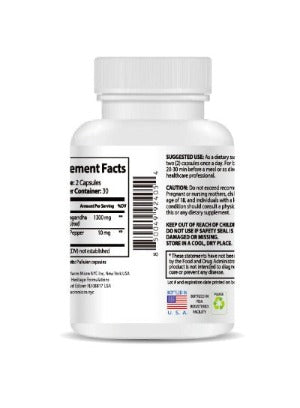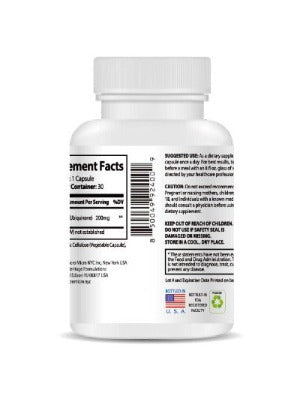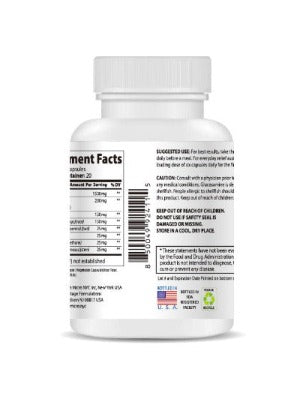Skip the $3,000 Treatments—Prevent Dry Eye Before It Gets Serious
If you've ever experienced the burning, gritty sensation of dry eyes, you know how uncomfortable and disruptive it can be. What might surprise you is that many people suffering from dry eye syndrome end up spending thousands of dollars on treatments that could have been prevented with simple, proactive measures. The good news? You don't need to wait until your dry eye becomes severe—or expensive to treat—before taking action.
Understanding Dry Eye: More Than Just Irritation
Dry eye syndrome affects millions of people worldwide, yet it's often misunderstood as a minor inconvenience. In reality, dry eye is a complex condition that occurs when your eyes don't produce enough tears or when the quality of your tears is poor. This can lead to inflammation, discomfort, and even vision problems if left untreated.
The symptoms can range from mild to severe and include:
- Persistent dryness and grittiness
- Burning or stinging sensations
- Redness and irritation
- Blurred vision
- Sensitivity to light
- Eye fatigue, especially after screen time
- Excessive tearing (yes, this is actually a symptom of dry eye!)
What makes dry eye particularly challenging is that it's often a progressive condition. What starts as occasional discomfort can develop into chronic inflammation that requires intensive medical intervention.
The Hidden Costs of Ignoring Dry Eye
Many people dismiss early dry eye symptoms, thinking they'll resolve on their own. However, this approach can be costly—both financially and in terms of quality of life. Advanced dry eye treatments can include:
- Prescription medications costing hundreds of dollars monthly
- In-office procedures like punctal plugs or intense pulsed light therapy
- Specialized contact lenses designed for dry eye sufferers
- Advanced treatments like LipiFlow or TearCare, which can cost $1,000-$3,000 per session
Beyond the financial burden, severe dry eye can significantly impact your daily activities, work productivity, and overall well-being. The chronic discomfort can affect your sleep, concentration, and even your mental health.
Prevention: Your Best Defense Against Costly Treatments
The most effective approach to managing dry eye is prevention. By understanding the risk factors and implementing protective strategies early, you can maintain healthy eyes and avoid the need for expensive interventions.
Digital Eye Strain: The Modern Epidemic
In our screen-dominated world, digital eye strain has become a leading cause of dry eye symptoms. When we focus on screens, our blink rate decreases by up to 60%, reducing the natural lubrication our eyes need. This is particularly problematic for people who spend long hours working on computers, using smartphones, or engaging in other digital activities.
To combat digital eye strain:
- Follow the 20-20-20 rule: Every 20 minutes, look at something 20 feet away for 20 seconds
- Position your screen slightly below eye level to reduce eye opening and tear evaporation
- Ensure proper lighting to reduce glare and eye strain
- Consider using blue light filters, especially in the evening
- Make a conscious effort to blink more frequently while using screens
Environmental Factors and Lifestyle Adjustments
Your environment plays a crucial role in eye health. Dry, windy conditions, air conditioning, and heating systems can all contribute to tear evaporation and dry eye symptoms. Here are some environmental modifications that can help:
- Use a humidifier to maintain optimal moisture levels in your home and office
- Avoid direct exposure to air conditioning or heating vents
- Wear wraparound sunglasses when outdoors to protect against wind and UV rays
- Position fans away from your face while sleeping or working
- Consider air purifiers to reduce allergens that can worsen dry eye symptoms
Nutrition and Hydration: Internal Support for Eye Health
What you eat and drink directly impacts your eye health. A diet rich in omega-3 fatty acids, antioxidants, and essential nutrients can support healthy tear production and reduce inflammation.
Key nutrients for eye health include:
- Omega-3 fatty acids found in fish, flaxseeds, and walnuts
- Vitamin A from leafy greens, carrots, and sweet potatoes
- Vitamin C from citrus fruits, berries, and bell peppers
- Vitamin E from nuts, seeds, and vegetable oils
- Zinc from oysters, beef, and pumpkin seeds
Staying properly hydrated is equally important. Dehydration can directly affect tear production, so aim for at least 8 glasses of water daily, more if you're active or in dry climates.
Sleep and Stress Management
Quality sleep and stress management are often overlooked factors in eye health. Poor sleep can reduce tear production and increase inflammation, while chronic stress can exacerbate dry eye symptoms through various physiological pathways.
To support your eye health through better sleep and stress management:
- Maintain a consistent sleep schedule with 7-9 hours of quality sleep
- Create a dark, cool sleeping environment
- Practice relaxation techniques like meditation or deep breathing
- Engage in regular physical activity to reduce stress and improve circulation
- Limit caffeine and alcohol, especially before bedtime
Natural Solutions: The Power of Traditional Medicine
While modern medicine offers effective treatments for dry eye, traditional approaches often provide gentle, sustainable relief without the side effects associated with pharmaceutical interventions. Traditional Chinese Medicine (TCM), in particular, has been addressing eye health concerns for thousands of years with remarkable success.
Natural remedies often work by addressing the root causes of dry eye rather than just masking symptoms. They typically focus on:
- Reducing inflammation naturally
- Supporting the body's natural tear production
- Improving circulation to the eye area
- Providing essential nutrients for eye health
- Offering gentle, non-invasive relief
One example of this approach is the Wisequest, which combines traditional Chinese medicinal principles with modern convenience. This innovative eye patch harnesses the power of natural ingredients to provide targeted relief for dry, tired eyes. The formula is designed to be gentle yet effective, offering the benefits of traditional medicine without the complexity of preparing herbal remedies at home.
What makes natural solutions particularly appealing is their safety profile. Unlike pharmaceutical treatments that may come with side effects or contraindications, natural remedies typically work harmoniously with your body's natural processes.
Creating Your Dry Eye Prevention Plan
Prevention is always better than treatment, and creating a comprehensive dry eye prevention plan can save you thousands of dollars in medical expenses while maintaining your quality of life. Here's how to develop an effective prevention strategy:
Daily Habits That Make a Difference
Small, consistent actions can have a significant impact on your eye health:
- Start each day with a warm compress to stimulate oil glands
- Practice conscious blinking, especially during screen time
- Take regular breaks from close-up work
- Stay hydrated throughout the day
- Use artificial tears proactively, before symptoms develop
Weekly and Monthly Maintenance
Establish regular routines for deeper eye care:
- Perform gentle eyelid massage to promote oil gland function
- Clean your eyelids with a warm, damp cloth to remove debris
- Evaluate your environment and make adjustments as needed
- Monitor your symptoms and track any changes
- Consider natural treatments like cooling eye patches for additional support
Annual Eye Health Assessment
Even with excellent prevention habits, regular professional eye examinations are essential. Your eye care provider can:
- Assess your tear film quality and quantity
- Identify early signs of dry eye syndrome
- Recommend personalized prevention strategies
- Monitor any changes in your eye health over time
- Provide guidance on when additional treatments might be beneficial
When to Seek Professional Help
While prevention is key, it's important to know when to consult with an eye care professional. Seek medical attention if you experience:
- Persistent symptoms despite prevention efforts
- Severe pain or vision changes
- Signs of infection, such as discharge or extreme redness
- Symptoms that interfere with daily activities
- Concerns about your eye health or treatment effectiveness
Remember, early intervention is still more cost-effective than waiting until dry eye becomes severe. A professional evaluation can help you optimize your prevention strategy and catch any issues before they become expensive problems.
The Bottom Line: Invest in Prevention Today
Dry eye syndrome doesn't have to derail your life or drain your wallet. By taking proactive steps to prevent dry eye before it becomes serious, you can maintain comfortable, healthy eyes while avoiding costly treatments down the road.
The key is to start early, be consistent, and combine multiple approaches for the best results. Whether you're incorporating digital wellness habits, making environmental adjustments, focusing on nutrition, or exploring natural remedies, every step you take toward prevention is an investment in your long-term eye health and financial well-being.
Remember, your eyes are irreplaceable, and the small actions you take today can make a significant difference in how you feel tomorrow. Don't wait until dry eye becomes a serious problem—start your prevention journey now and keep those expensive treatments where they belong: as a last resort, not a first necessity.
Frequently Asked Questions About Dry Eye Prevention
Q: How can I tell if my eye discomfort is actually dry eye syndrome or just temporary irritation?
A: Dry eye syndrome typically involves persistent symptoms that last for weeks or months, rather than temporary irritation that resolves quickly. Key indicators include symptoms that worsen throughout the day, occur consistently in certain environments (like air-conditioned spaces), or are accompanied by a gritty, sandy sensation. If you experience burning, stinging, or excessive tearing regularly, especially after screen time or in dry environments, it's likely dry eye syndrome. The best approach is to track your symptoms for a week or two—if they persist or follow patterns, consider consulting an eye care professional for proper evaluation.
Q: Are there any natural ingredients I should look for in eye care products to help prevent dry eye?
A: Yes, several natural ingredients have proven beneficial for eye health and dry eye prevention. Look for products containing chamomile, which has anti-inflammatory properties; aloe vera for its soothing and moisturizing effects; and green tea extract, which provides antioxidants that support overall eye health. Traditional Chinese medicinal herbs like chrysanthemum and goji berries are also excellent for eye wellness. When choosing natural eye care products, ensure they're specifically formulated for the delicate eye area and are free from harsh chemicals or fragrances that could cause irritation.
Q: How long does it typically take to see improvement when using natural dry eye prevention methods?
A: The timeline for improvement varies depending on the severity of your symptoms and the methods you're using. Many people notice some relief from environmental changes and proper hydration within a few days to a week. Natural topical treatments like cooling eye patches may provide immediate comfort, while the underlying benefits develop over 2-4 weeks of consistent use. Dietary changes and omega-3 supplementation typically show results after 4-8 weeks of regular intake. The key is consistency—natural methods work best when incorporated into your daily routine rather than used sporadically.
Q: Can I use natural dry eye prevention methods alongside my current eye medications?
A: In most cases, natural prevention methods can safely complement conventional treatments, but it's essential to consult with your eye care provider first. Natural approaches like environmental modifications, dietary changes, and gentle cooling treatments typically don't interfere with medications. However, your doctor needs to know about all products you're using to ensure there are no interactions and that your treatment plan is optimized. Many eye care professionals actually encourage combining natural prevention methods with medical treatments for the best outcomes.
Q: What's the difference between using artificial tears and natural eye care products for dry eye prevention?
A: Artificial tears primarily provide immediate lubrication and symptom relief, while natural eye care products often work to address underlying causes of dry eye. Artificial tears are excellent for quick relief and can be used frequently throughout the day, but they don't typically provide long-term benefits beyond temporary moisture. Natural products, particularly those with traditional medicinal ingredients, may help reduce inflammation, improve circulation, and support your eye's natural healing processes. The ideal approach often combines both: artificial tears for immediate comfort and natural products for ongoing prevention and eye health support. Choose preservative-free artificial tears if you need to use them frequently, and look for natural products with clinically studied ingredients for the best results.









